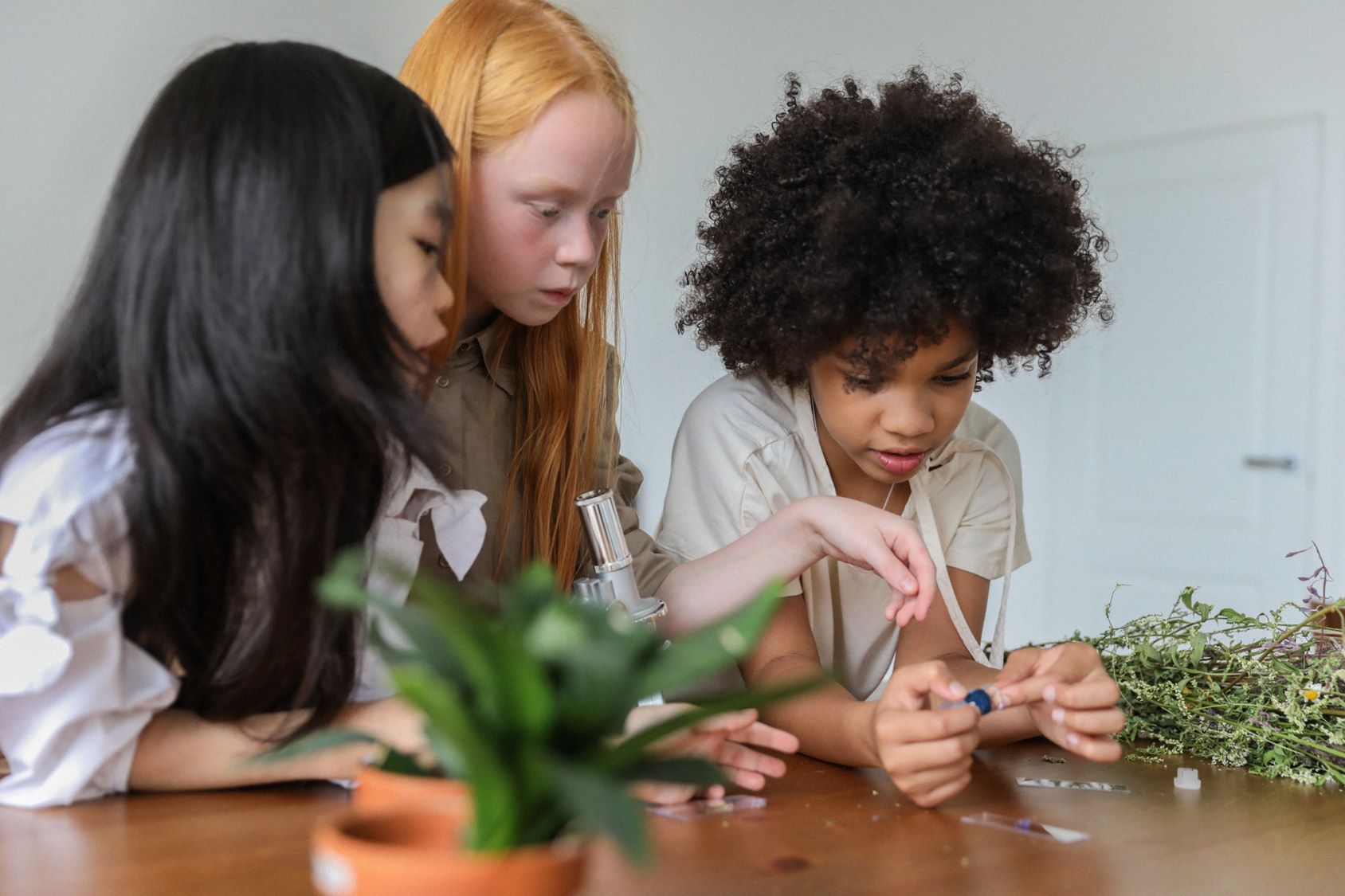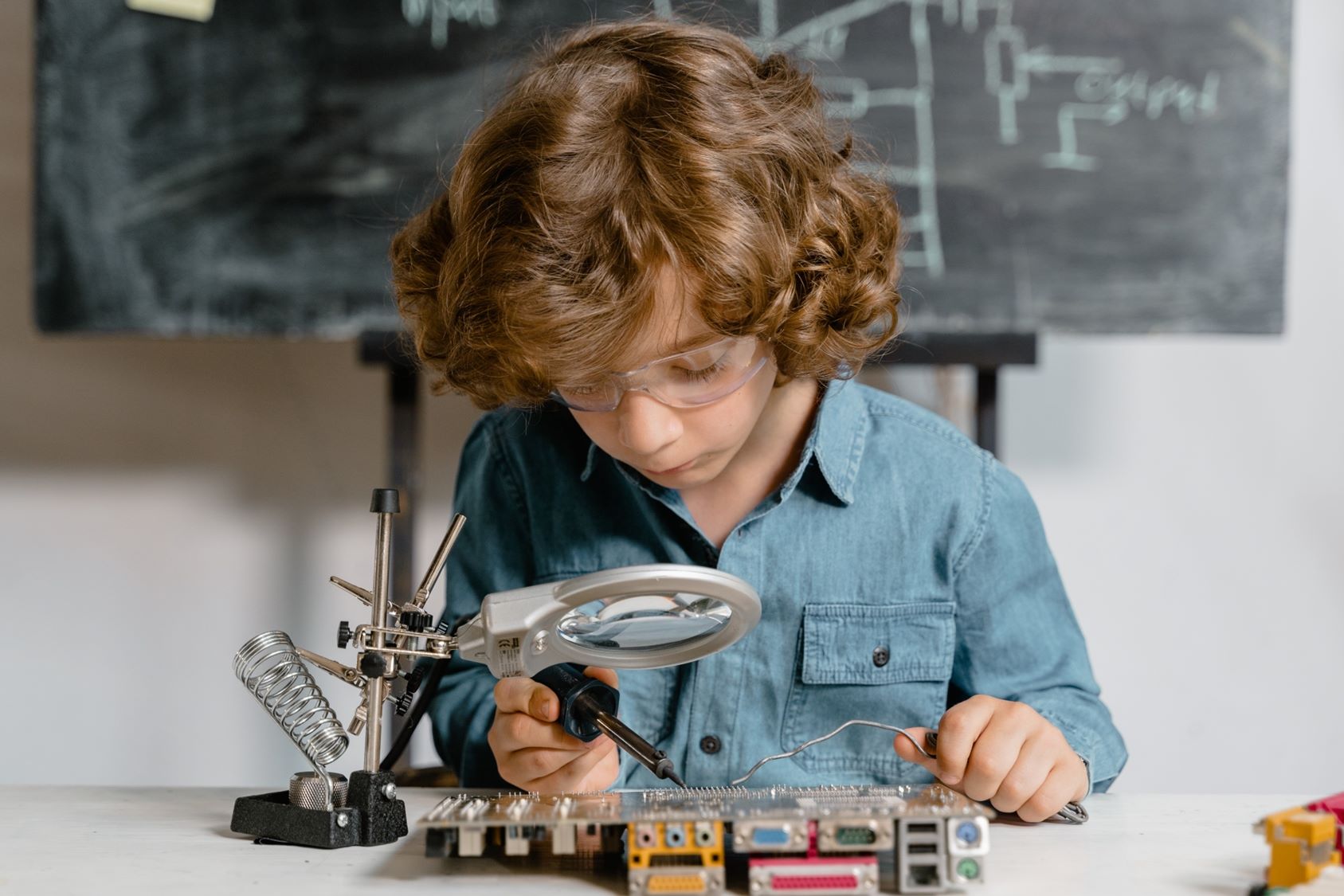
It is such a pleasure to be able to share my thoughts with you all as you transform lives around the world. While the focus of this article is science, it can easily relate to every subject. God created this world and set us as caretakers.[1] Science is our process to learn more about the world that God made, which He considered good. Analyzing God’s creations can also be inspiring to our students. In science, students must concretely see the purposeful design of the world—both in the amazing way things work and through the difficulty of trying to recreate even simple parallel systems.
Proverbs 9:10-11 describes discernment for truth. First, it is to fear the Lord and to gain knowledge of the Holy One for understanding. Learning about God’s creation complements the knowledge we gain about Him through prayer, the Spirit, and Scripture. The world is such an amazing, interrelated creation. The scientific method allows students to see a tiny glimpse of God’s creation and how it is interwoven through life. It drives each student to see tiny impacts of the facet they are studying and see how that facet is used throughout the entire system.
The applicability and engagement with God’s creation, “the Real World,” has already been applied to all subjects through Kolb’s Experiential Learning Model.[2] Kolb’s process mirrors the scientific method, but describes the process in four parts where the student:
- Experiences a facet of today’s world
- Reflects on what they are perceiving
- Attempts to conceptualize it into a larger schema
- Creates an experiment to test their hypothesis.
 The first key item is to experience a part of the world. We know transformation begins from within, and recognizing the wonder and awe in God's creation can often facilitate students' understanding of the gifts God has given each of them and the work that lies in front of them. The scientific method does not just help them see how the world works, but also shapes how they interpret and apply Scripture. Scripture is both steadfastly true and has a complexity of many interrelated parts. By learning how valence electrons determine chemical properties for elements and how these elements work together to make our whole world, the students are gaining the same set of skills they need to understand Scripture. We can help students with this skill in every subject using the Experiential Learning Model.
The first key item is to experience a part of the world. We know transformation begins from within, and recognizing the wonder and awe in God's creation can often facilitate students' understanding of the gifts God has given each of them and the work that lies in front of them. The scientific method does not just help them see how the world works, but also shapes how they interpret and apply Scripture. Scripture is both steadfastly true and has a complexity of many interrelated parts. By learning how valence electrons determine chemical properties for elements and how these elements work together to make our whole world, the students are gaining the same set of skills they need to understand Scripture. We can help students with this skill in every subject using the Experiential Learning Model.
Sometimes, Christians shy away from scientific results fearing that they might contradict our knowledge of Scripture. However, we need not fear our findings, for we know that God created the entire universe. If something seems contradictory there must be something we don’t understand, which would prompt further study. While there are certainly parts of our existence that are beyond our comprehension, we must reclaim the days when Christians were at the forefront of scientific advancements. For centuries, Christians shaped the world through their desire to understand God through science and applying this knowledge to be the best stewards that they could be. Vishal Mangalwadi does an excellent job chronicling this in his work The Book that Made Your World.[3] It is our job as educators to instill this fervent desire to know God and work feverishly for His glory.
However, in order to give our students the opportunity to engage with the world God made, we need instructional time – which might seem impossible with the seemingly endless list of curricular requirements. We must continually strive to distill our objectives into the most  essential aspects of the subject to allow time for this type of concrete learning and mastery through application. If it just doesn’t seem possible to focus on only a few areas with the entire class, another option is the “T” design.[4] In the “T” design, all students are introduced to a variety of topics, but each student chooses one part to interact with on a deeper level.
essential aspects of the subject to allow time for this type of concrete learning and mastery through application. If it just doesn’t seem possible to focus on only a few areas with the entire class, another option is the “T” design.[4] In the “T” design, all students are introduced to a variety of topics, but each student chooses one part to interact with on a deeper level.
Students will often be drawn to complicated questions, processes, and issues. Connecting subject or course material to things they can see and feel helps to pique their curiosity, and it is worth the effort to find pedagogically appropriate material in those interests. Sometimes a project might produce more questions than answers, but the students can still gain a stronger understanding of the world God created.
As students learn to draw the connections of the things they can see, it will also help them on their journey understanding how Jesus fits in the Creation, Fall, Redemption and Restoration of the world. In this way, they learn more about God, the amazing world He created, and His purposeful design for it, as well as their part in caring for it.
S. T.
Currently, S.T. teaches science & technology in Southeast Asia, where he also serves on the school’s leadership team. S.T. had been involved in teacher preparation for 11 years before returning to the K-12 classroom. He is passionate about integrating faith and contemporary application throughout the curriculum and seeing it help the students strengthen their God given abilities.
[1] See Genesis 2:15.
[2] Boston University Center for Teaching & Learning. (n.d.). Experiential Learning. https://www.bu.edu/ctl/guides/experiential-learning/
[3] Mangalwadi, V. (2011). The book that made your world: How the Bible created the soul of western civilization. Thomas Nelson.
[4] Metha, J. (2015, July 14). Breadth and depth: Can we have it both ways? Education Week. https://www.edweek.org/education/opinion-breadth-and-depth-can-we-have-it-both-ways/2015/07
